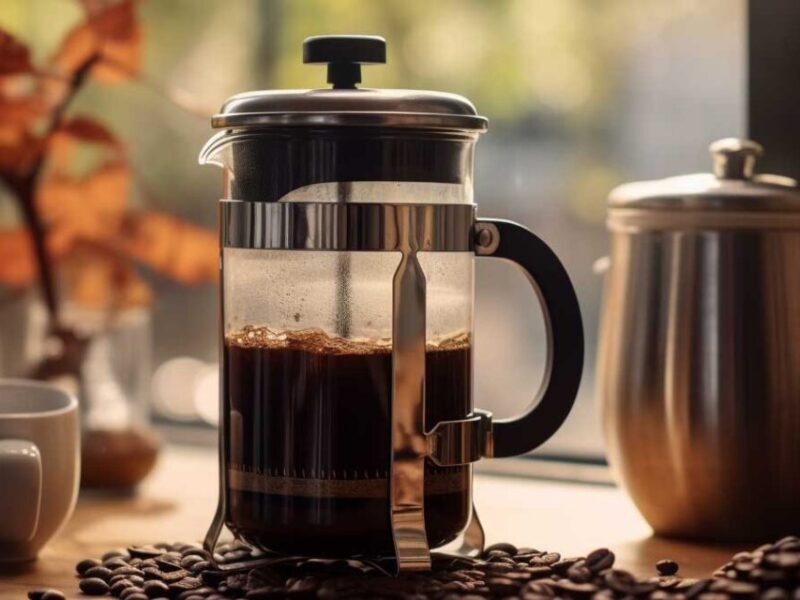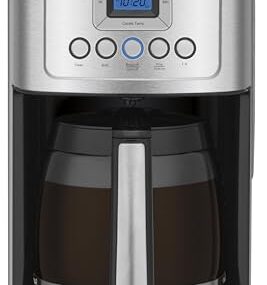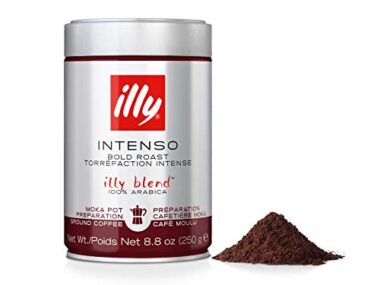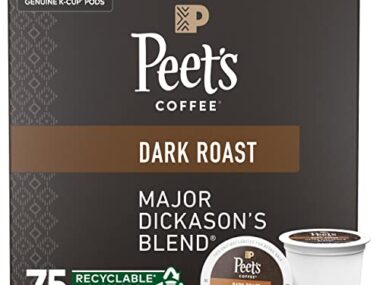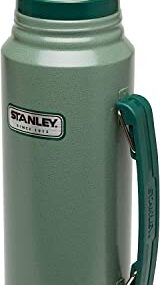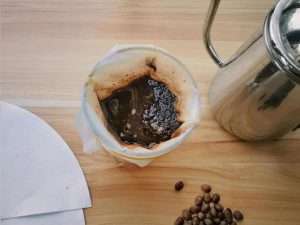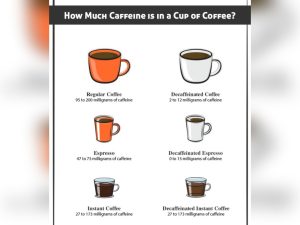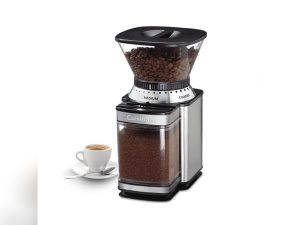Have you ever wondered what makes a great cup of coffee? If you love the aroma and taste of freshly brewed coffee, you might be curious about the magic behind it. One classic method that stands the test of time is the percolator — but what is a coffee percolator, and how does it create such bold, rich flavor? Whether you’re a coffee enthusiast or just starting your brewing journey, understanding this traditional device can take your coffee game to the next level.
One tool that has been a staple in many coffee lovers’ kitchens is the coffee percolator. But what is a coffee percolator, and why should you care? Imagine waking up to the rich, inviting scent of coffee wafting through your home.
A coffee percolator can make this dream a reality. It’s not just a kitchen gadget; it’s a ticket to a sensory experience every morning. If you want to elevate your coffee game and enjoy every sip to the fullest, understanding the role of a coffee percolator is essential. You’ll discover how this simple device can transform your daily coffee ritual. From its unique brewing process to the delightful flavors it can unlock, there’s so much to learn. So, sit back, grab a cup of your favorite brew, and let’s explore the world of coffee percolators together. You might just find the secret to making your mornings even better.
:max_bytes(150000):strip_icc()/CoffeePercolatorLeadImage-d2b1c3e6caec42d78348e462f267e942.jpg)
Credit: www.seriouseats.com
History Of Coffee Percolators
Have you ever wondered how coffee percolators became a staple in kitchens worldwide? Let’s take a journey through the intriguing history of coffee percolators. This brewing device has evolved over time, impacting how we enjoy our daily cup of coffee.
Early Innovations In Coffee Brewing
In the early 19th century, coffee enthusiasts were already experimenting with various brewing methods. The first known percolator was patented by American inventor James Nason in 1865. This initial design set the stage for future innovations by introducing the concept of cycling water through coffee grounds.
The Rise Of The Percolator
Alfonso Bialetti, a name many coffee lovers recognize, contributed significantly to the popularity of percolators. His iconic Moka pot, invented in 1933, brought percolator-style brewing to households across Italy. While different from traditional percolators, it showcased the potential of stovetop coffee makers.
Percolators In The Mid-20th Century
By the mid-20th century, percolators were a common sight in American kitchens. Their popularity soared due to the convenience they offered. Electric models emerged, making it easier than ever to brew coffee without constant supervision. This period marked a turning point, as coffee became more accessible to the average consumer.
Modern Day Usage
Today, percolators are appreciated for their nostalgic value and robust flavor. While they may not be as widespread as drip coffee makers, they hold a special place in the hearts of coffee purists. Some claim that the percolator’s unique brewing process enhances the coffee’s aroma and taste. Do you agree?
The history of coffee percolators is a testament to human innovation and our love for coffee. Each stage of its evolution reflects changing lifestyles and technological advancements. So, next time you brew a pot, consider the rich history behind your cup. Have you ever tried using a percolator? What’s your experience?
:max_bytes(150000):strip_icc()/CoffeePercolatorInherentlyFlawed-d359bb6764e143d090d534b0c4cbed5e.jpg)
Credit: www.seriouseats.com
How Coffee Percolators Work
A coffee percolator is a classic brewing tool that cycles hot water through coffee grounds. Water heats up, rises through a tube, and drips over the grounds repeatedly. This process extracts flavors until the coffee reaches the desired strength, creating a robust and aromatic brew.
Understanding how coffee percolators work can enhance your appreciation for this classic brewing method. It’s an experience that blends simplicity and nostalgia, often reminding us of family gatherings or camping trips. Whether you’re a coffee aficionado or just someone curious about the process, knowing the mechanics can deepen your connection to your daily brew.
Mechanism And Process
A coffee percolator operates on a straightforward principle: water is heated, rises through a tube, and drips over coffee grounds. This cycle repeats, extracting flavor with each pass. The process continues until the desired coffee strength is achieved. Picture this: as the water heats, it bubbles up a central tube. It then spreads over the coffee grounds, soaking them thoroughly. The brewed coffee trickles back down to the pot, intensifying with each cycle. There’s a unique satisfaction in watching this process unfold. The rhythmic bubbling and the aroma fill the air, creating a sensory experience that’s hard to beat. You control the brewing time, giving you the power to perfect your coffee’s strength and taste.
Parts Of A Percolator
To get the most out of your coffee percolator, it helps to know its parts. Understanding these components can make brewing easier and more effective. – Coffee Pot: This is the main body where the brewed coffee collects. Typically, it’s made of stainless steel or glass. – Percolation Tube: A central tube that carries hot water to the top. It’s the heart of the percolation process. – Basket: Holds the coffee grounds. It’s perforated to allow water to flow through and extract flavor. – Lid: Seals the pot to maintain heat. Some lids have a clear knob to let you watch the coffee brew. – Base: Houses the heating element. It’s where the magic begins as it heats the water. Each part plays a crucial role in the brewing process. Missing or damaged parts can affect your coffee’s taste and strength. Have you ever wondered why your coffee tastes different? Checking these components might reveal the answer. Embrace the simplicity and charm of the percolator. Its straightforward design offers a hands-on approach that many modern machines lack. By mastering its mechanics and understanding its parts, you can brew a cup that’s truly your own.
Types Of Coffee Percolators
A coffee percolator is a device that brews coffee by cycling boiling water through coffee grounds. There are different types, including stovetop percolators, electric percolators, and camping percolators. Each type offers a distinct brewing experience, catering to different preferences and settings.
When it comes to brewing coffee, the percolator is a classic choice that offers a unique experience. There are different types of coffee percolators that cater to various preferences and lifestyles. Understanding these types can help you decide which one fits best into your daily routine.
Stovetop Percolators
Stovetop percolators are the traditional choice. They work by cycling boiling water through coffee grounds using gravity. Simple and reliable, they don’t require electricity—just a heat source. Many coffee lovers appreciate the hands-on experience stovetop percolators offer. You control the heat, and with practice, you can fine-tune the brewing process to your taste. Plus, they’re perfect for camping trips or power outages.
Electric Percolators
Electric percolators simplify the brewing process. Plug it in, and it takes care of everything, from heating the water to cycling it through the coffee. These are great for those who want convenience without sacrificing the rich flavor of percolated coffee. Electric models often come with features like automatic shut-off and keep-warm functions. This makes them ideal for busy mornings when you don’t want to worry about turning off the stove. If you value convenience and consistency, an electric percolator might be your new best friend. Have you ever considered how your coffee-making routine reflects your lifestyle? Whether you prefer the control of a stovetop or the ease of an electric percolator, each type offers a unique way to enjoy your coffee. Which one resonates with you?
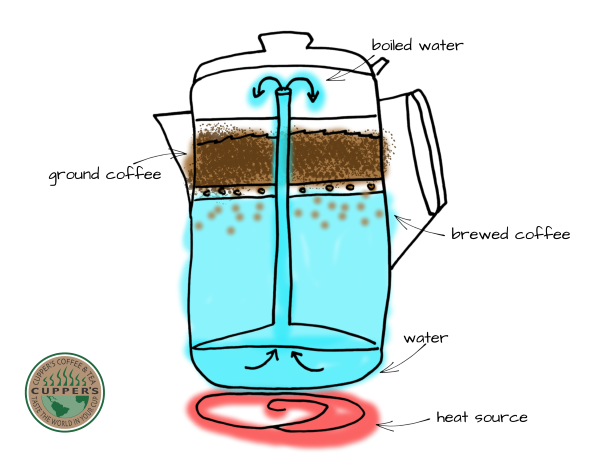
Credit: www.cuppers.ca
Benefits Of Using A Percolator
A coffee percolator brews rich, aromatic coffee by cycling boiling water through coffee grounds. It enhances flavor and aroma, making each cup enjoyable. Easy to use and durable, percolators are a great choice for coffee lovers seeking simplicity and taste.
Using a coffee percolator can transform your coffee experience, offering unique advantages that other brewing methods might miss. Percolators have been a staple in homes and campsites for decades, and there’s a good reason for their enduring popularity. Let’s explore why choosing a percolator might just be the best decision for your morning routine.
Flavor And Aroma
A coffee percolator brings out a rich flavor and bold aroma that can make your mornings truly delightful. The process of cycling boiling water through coffee grounds ensures a robust, full-bodied taste that many coffee enthusiasts swear by. Once, on a camping trip, I discovered that the simple act of brewing coffee with a percolator not only filled the air with an inviting scent but also turned the whole experience into a moment of pure bliss. Have you ever noticed how certain aromas can trigger fond memories?
Convenience
Percolators are straightforward and easy to use, making them a convenient choice for both beginners and seasoned coffee drinkers. With no complicated settings or buttons, you can enjoy a perfect cup of coffee with minimal effort. Imagine waking up on a chilly morning and simply placing your percolator on the stove or campfire. The anticipation of that first sip is made easier because you know it’s just a matter of minutes before you enjoy your hot brew. Isn’t it comforting to have one less thing to worry about in your busy day? Choosing a percolator could be a game-changer for your coffee routine. Why not give it a try and see how it fits into your lifestyle?
Challenges In Percolator Brewing
A coffee percolator brews coffee by cycling boiling water through coffee grounds. It can be tricky to control the brewing time and temperature. Over-extraction often results in bitter coffee, while under-extraction leads to weak flavors. Balancing these factors is key for a good cup.
Brewing coffee with a percolator can be a delightful ritual for some, yet it comes with unique challenges that can impact your coffee experience. Whether you’re a seasoned coffee enthusiast or a curious beginner, understanding these hurdles can help you brew better coffee. Are you ready to dive into the nuances of percolator brewing?
Over-extraction Issues
Over-extraction is a common pitfall in percolator brewing. The percolator continuously cycles water through the coffee grounds, which can lead to a bitter taste. Have you ever wondered why your coffee tastes more like dark chocolate than the sweet aroma you expect? The trick is in the grind. Using coarser coffee grounds can reduce the risk of over-extraction. Try experimenting with grind size to find the balance that suits your taste. A simple adjustment can transform the flavor profile of your brew.
Temperature Control
Temperature plays a crucial role in percolator brewing. If the water gets too hot, it can scald the coffee, leaving you with a burnt taste. Keeping an eye on the heat can be challenging, especially when you’re multitasking in the morning. Have you ever felt torn between flipping pancakes and ensuring your coffee doesn’t boil over? A practical tip is to use a thermometer. This tool helps you monitor the temperature, ensuring it stays within the ideal range. Consistent temperature control can make your coffee smoother and more enjoyable. Brewing coffee with a percolator demands attention to detail. By addressing over-extraction and temperature control, you can enhance your coffee experience. What adjustments will you make to perfect your brew?
Tips For Perfect Percolator Coffee
Perfecting coffee with a percolator involves a few key steps. Each step ensures you get a rich and flavorful brew. Let’s explore some tips that can elevate your percolator coffee experience. From selecting the right coffee to keeping track of brewing time, these tips are simple yet effective.
Choosing The Right Coffee
The choice of coffee is crucial for percolator brewing. Opt for coarsely ground coffee beans. Fine grounds can clog the filter basket, impacting flavor. Select beans with a medium to dark roast. These roasts typically provide a robust and aromatic brew. Try different beans to find your preferred taste profile.
Monitoring Brewing Time
Brewing time affects the strength and taste of your coffee. Start by percolating for around seven to ten minutes. Shorter time results in a milder flavor. Longer brewing can make the coffee taste bitter. Use a timer to maintain consistency in every brew. Adjust time based on your taste preference. Experiment to find your ideal balance.
Comparing Percolators With Other Methods
A coffee percolator heats water, sending it through coffee grounds repeatedly. This method extracts rich flavors, differing from drip brewers or French presses. Its bubbling sound and strong aroma offer a distinctive brewing experience.
When it comes to brewing coffee, the method you choose can significantly influence the flavor and experience. Whether you’re a seasoned coffee enthusiast or just beginning to explore, understanding how a coffee percolator stacks up against other popular brewing methods can guide you to your perfect cup. By comparing percolators with drip coffee makers and French presses, you can find which method aligns best with your taste and lifestyle.
Percolator Vs. Drip Coffee
A coffee percolator and a drip coffee maker each offer unique experiences. Percolators cycle the brewing water through the coffee grounds multiple times, potentially resulting in a richer, more robust flavor. However, this can sometimes lead to over-extraction and bitterness if not monitored carefully. Drip coffee makers, on the other hand, are often praised for their convenience and consistency. They pour hot water over the grounds once, delivering a more predictable and mild flavor profile. If you value ease of use and a reliable cup every morning, a drip coffee maker might be more your style. Both methods have their merits, but they cater to different preferences. Which do you prioritize: the depth of flavor or the simplicity of brewing?
Percolator Vs. French Press
The French press is another favorite among coffee lovers, known for its full-bodied brew. Unlike percolators, French presses steep coffee grounds in hot water, allowing the oils and flavors to fully develop. This results in a rich, aromatic cup with a distinct mouthfeel. Percolators, conversely, offer a bolder taste with a slightly different texture. They work well for those who enjoy a stronger brew but can sometimes leave sediment in your cup, similar to the French press. Both methods require a bit more attention than a drip coffee maker but reward you with a more personalized coffee experience. Do you prefer the immersion of a French press or the cyclical brewing of a percolator? As you consider these options, think about what you want from your coffee ritual. Is it the adventure of experimenting with flavors or the familiarity of a routine that you seek?
Frequently Asked Questions
How Does A Coffee Percolator Work?
A coffee percolator brews coffee by cycling boiling water through coffee grounds. The water moves through a tube, drips over the grounds, and seeps back into the water chamber. This process is repeated until the desired coffee strength is achieved.
The result is a rich, robust flavor.
What Are The Benefits Of Using A Percolator?
Using a percolator enhances flavor by extracting more oils and essences from the coffee. It offers a full-bodied taste and can brew large quantities. Percolators are also durable and portable, making them ideal for camping or travel. They are versatile and work on various heat sources.
Is Percolated Coffee Stronger Than Drip Coffee?
Percolated coffee is typically stronger than drip coffee. The percolation process recycles water through the grounds multiple times. This results in a bolder and more intense flavor. Drip coffee, on the other hand, passes water through the grounds once, producing a milder taste.
How Do You Clean A Coffee Percolator?
To clean a coffee percolator, disassemble all removable parts. Rinse them with warm, soapy water and scrub gently. For the interior, fill the percolator with water and a vinegar solution. Run a brewing cycle, then rinse thoroughly. Regular cleaning prevents buildup and ensures optimal coffee flavor.
Conclusion
A coffee percolator is a classic brewing tool. It offers a rich, bold taste. Perfect for those who love strong coffee flavors. Easy to use, it fits any kitchen. Affordable and durable, it lasts for years. With a rhythmic brewing process, it creates a satisfying aroma.
Ideal for morning routines or gatherings. A wonderful choice for coffee enthusiasts. Discover the joy of percolated coffee today. Enjoy a timeless method that never goes out of style. Simple and effective. Make coffee brewing an enjoyable experience. Try using a percolator for your next coffee break.

